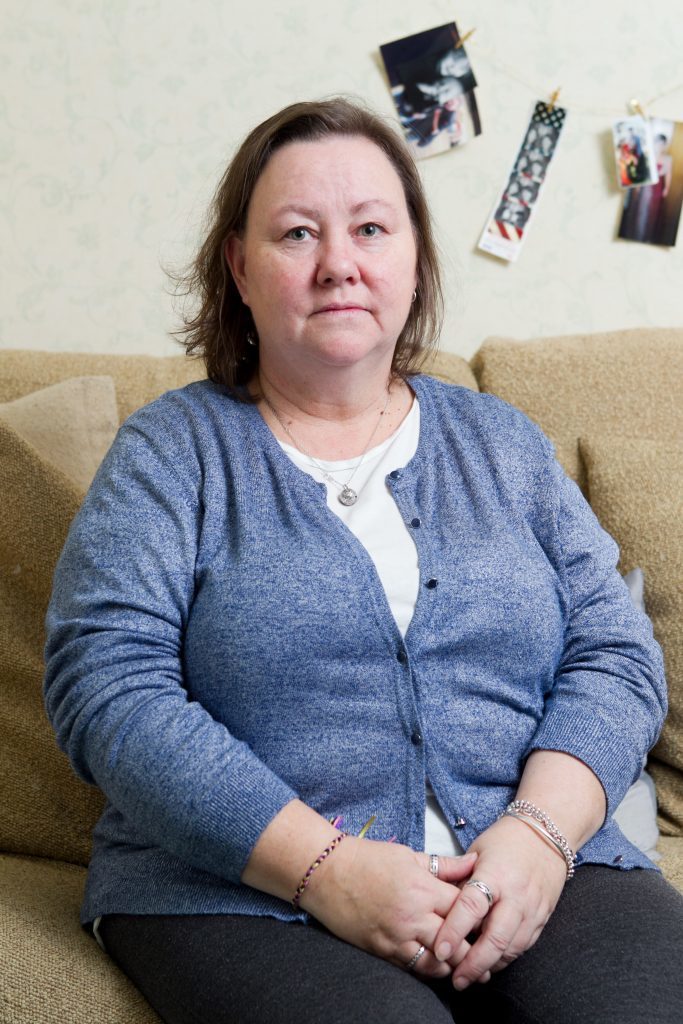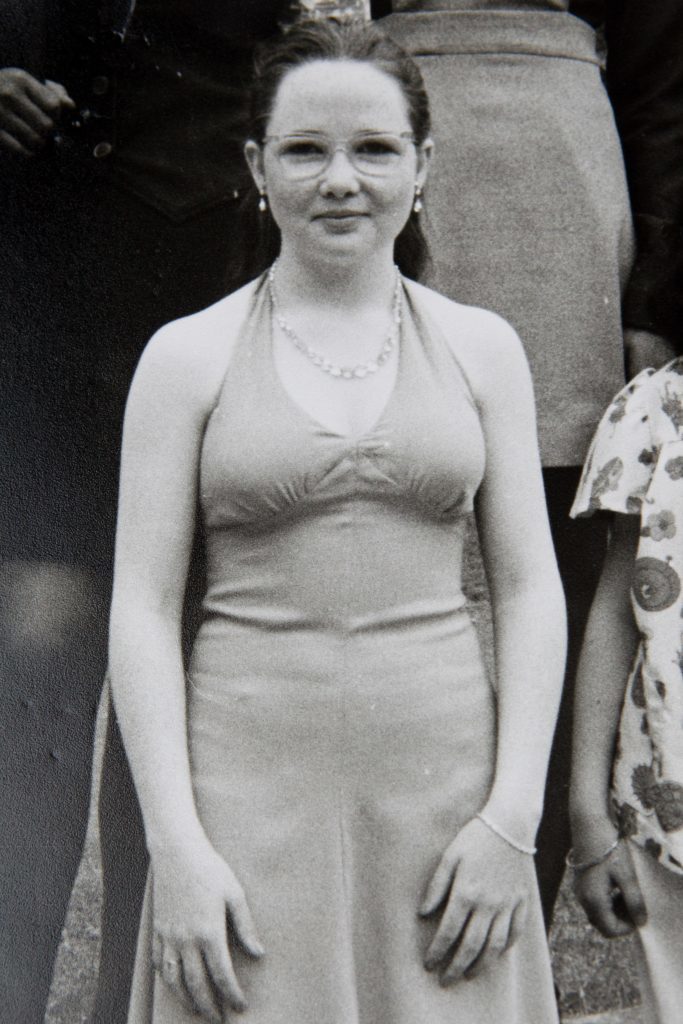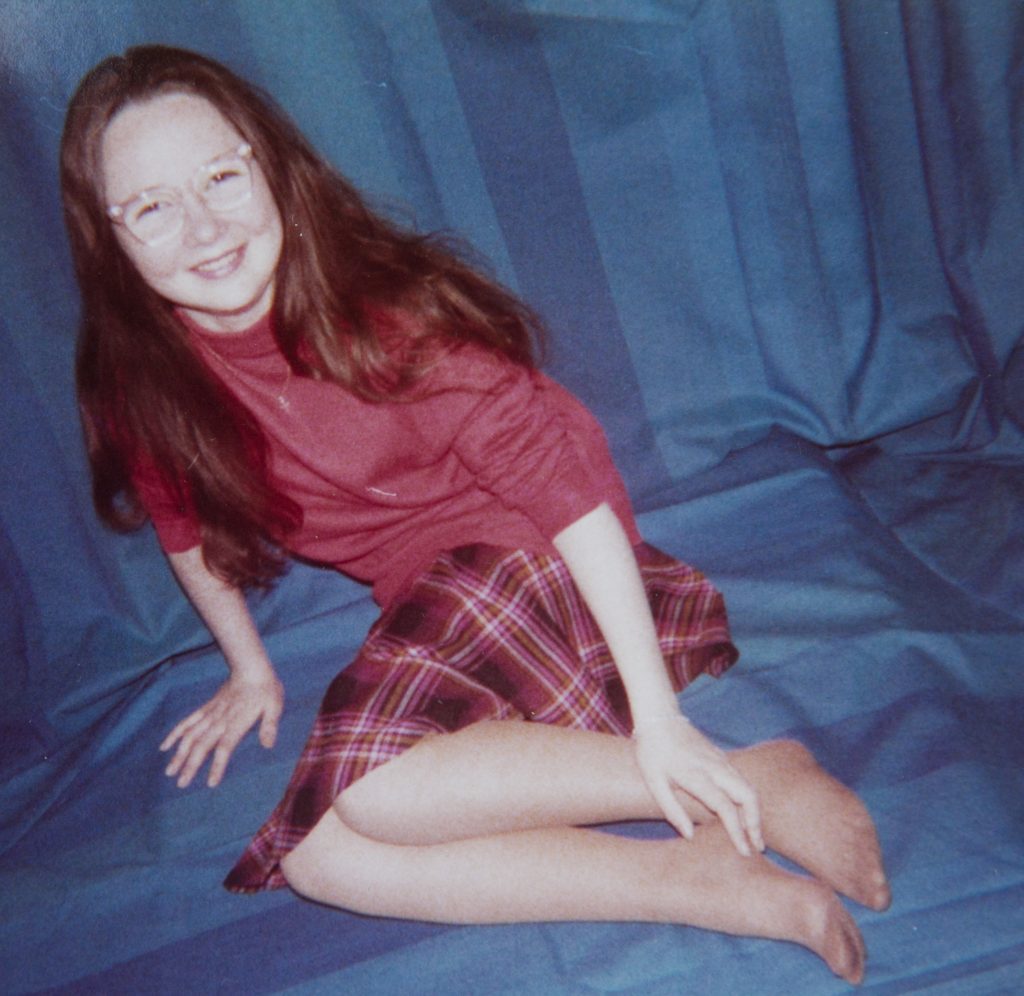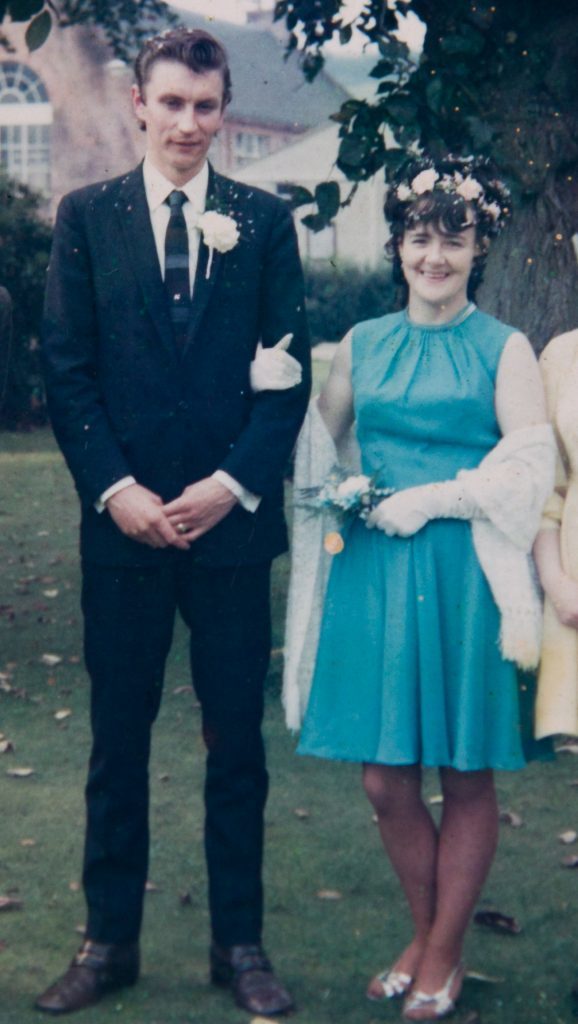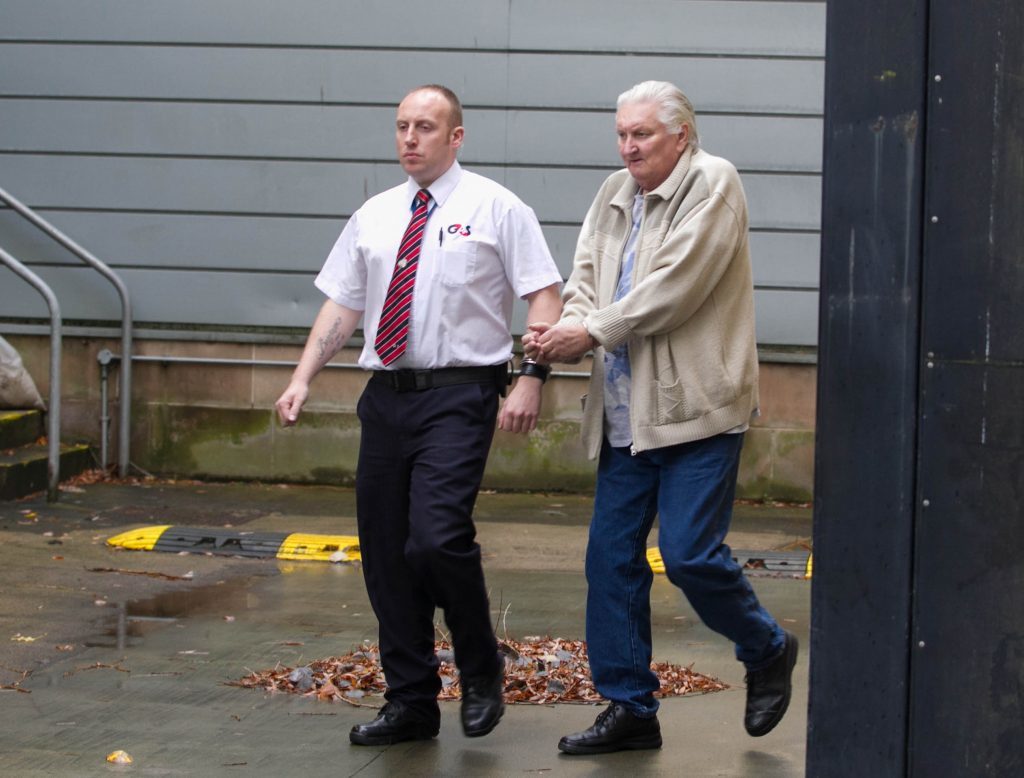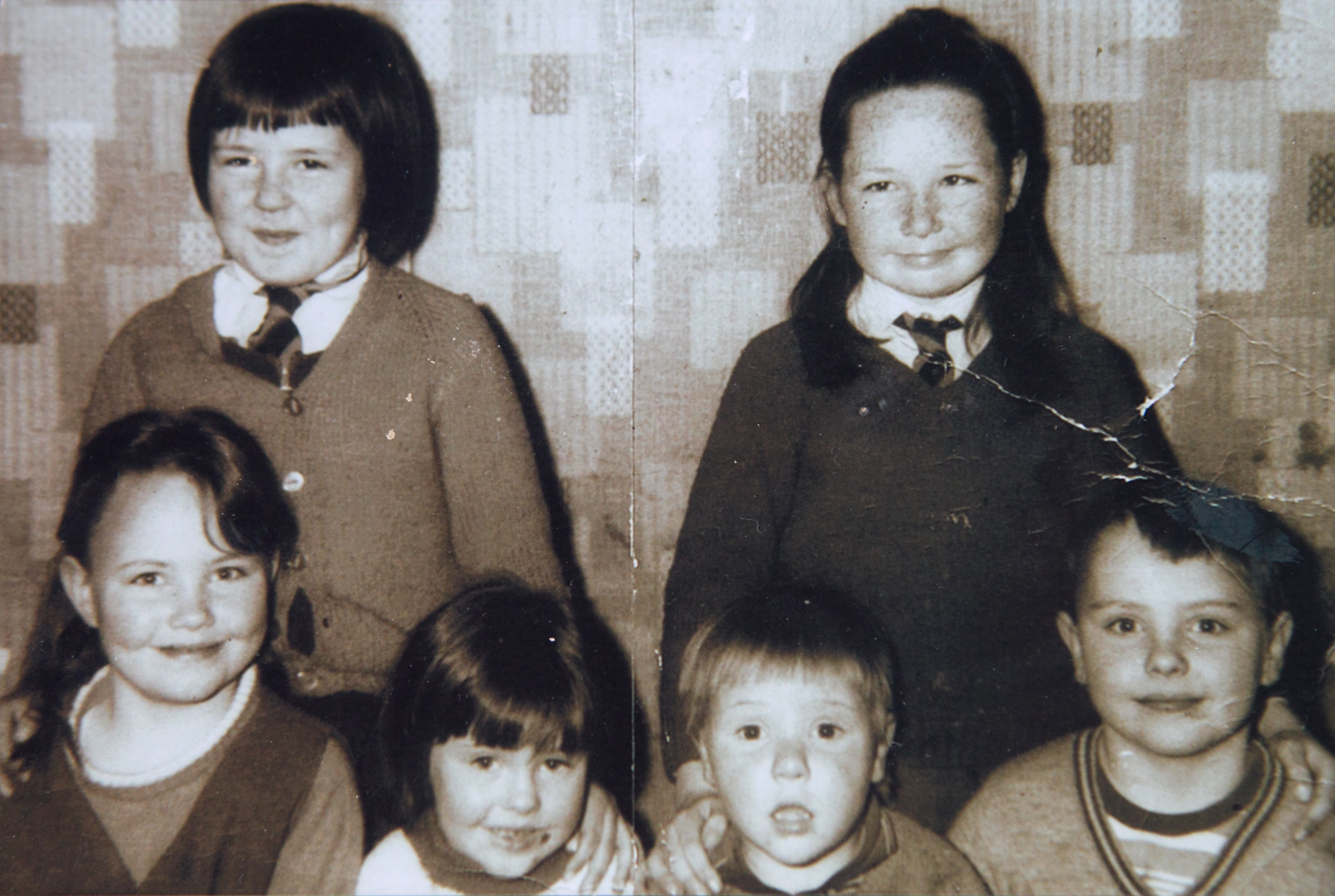
IT was a normal day in the late 1990s for Debbie Renwick.
Working as a school cleaner, she was busy buffing the floor. Then a song came on the radio. That song – I Grew Up In A House Like This – was to trigger a series of memories in Debbie that would change the course of many people’s lives.
Debbie had a flashback to experiencing sexual abuse at the hands of her stepfather, Norman Duncan. She had buried the memories up until then.
Earlier this month, Duncan was sentenced to five years in prison for a series of historical sexual offences against girls between 1968 and 1976.
The victims in sexual abuse cases are entitled to lifelong anonymity.
But today, Debbie and her sister Mandy are waiving their anonymity to tell their story. Mandy has asked we withhold her surname.
Debbie and Mandy believe their story should be told. They also want to shine a spotlight on their sister Mary, who has been missing for 40 years.
Mary had a baby, Laura, in the February of 1975. In March of 1976, Mary, then 17, disappeared near her home in West Dunbartonshire.
Despite her young age, Mary was a devoted mum. The family is adamant she would never have fled and left baby Laura behind. They strongly believe Norman Duncan can provide answers to Mary’s disappearance.
And the family, while believing Mary is no longer alive, dearly wish to bring her home and give their sister a decent burial.
For Debbie, that day in the late 1990s proved a turning point in her life. She explains: “When I had that flashback, my first thought was – how could I have forgotten that? If anyone believes it’s not possible, I would have said the same thing. But that’s what happened.
“And I’d always believed that someone knew something about what happened to Mary.
“It dawned on me that I might know something that could give us the answers we were looking for about Mary. She was on my mind a lot. It was around the time of the Fred West trial. And every time a new picture came up, we’d be thinking, maybe it will be Mary. That song triggered something in me.”
In 1999, after counselling, Debbie went to the police with her allegations of sexual abuse at the hands of Duncan. They investigated, but without other evidence, it would be seen as her word against his – and the matter was taken no further.
Debbie and Mandy are part of a close family. She had confided in them. And Mandy eventually confessed that she, too, was one of Duncan’s victims.
Mandy, from Warrington, also wanted answers about Mary and she believed her story may be part of a bigger picture.
The thought of going to the police and giving a statement against the man she considered a father was so daunting, it was more than a decade before she plucked up the courage to do so.
The sad irony is that when Duncan came into the family’s life in the 1960s, their mum Ruby believed it would improve things for everyone. Ruby, of Vale of Leven, was a single parent and Debbie and Mandy admit times were tough.
“It was 40 years ago. She was a single parent, with six kids. We lived in a two-bedroom, tenement building with no indoor bath,” recalls Mandy. “Someone prepared to take her and her six kids on must have seemed a godsend.”
But that was not the case. Duncan was cunning. The sisters claim he had an extension built in the attic for Debbie and Mandy’s brothers, so they were unaware of the abuse taking place.
For the sisters living with Mary’s disappearance, it has been incredibly painful.
“She never took any money, she literally left with the clothes on her back. There’s no way she would have left home without Laura. She was devoted to her,” Mandy, 52, says.
Debbie, a charity worker from Annan, agrees. “There’s been no trace of her. She has never claimed benefits, paid tax or National Insurance. Nowadays you could argue that people can change their identity. But a naive 17-year-old in 1976? No way.”
The sisters reminisce about Mary. Debbie, 54, remembers: “She was quiet. She loved sewing and she’d make clothes for her and Laura. She was petite.”
“And she loved The Osmonds. We weren’t just family – we were pals,” Mandy adds. “We spent a lot of our time together.”
The sisters believe on the day of Mary’s disappearance, she had a doctor’s appointment in which a second pregnancy was confirmed. That same day, she visited a friend but never returned. The sisters have been told Duncan was seen near the friend’s house that day around the time of Mary’s visit.
The sisters believe Mary never gave birth a second time. Sadly, baby Laura died when she was 18 months old.
“Laura had bronchial pneumonia. Mum got a doctor out and was told to steam her,” Debbie remembers. “Mum then took Laura in beside her to settle her. And I’ll never
forget the sound of her screaming. It was like an animal.
“Laura died in her arms. And mum never slept upstairs again. For the rest of her life, she slept on the couch.”
Laura’s death devastated the family. The sadness remains to this day. But along with that sadness there’s a determination to find out what happened to Mary. Following Debbie’s revelations in 1999 and Mandy’s statement to police earlier this year, a case against Duncan started to build.
Then, Detective Constable Iain Cameron and an investigating team made a crucial breakthrough. DC Cameron managed to find a 40-year-old blood sample which proved Duncan had committed historical sex abuse. It was compelling evidence. The jury agreed unanimously on all but one charge, and he was found guilty of the abuse of the girls.
When allegations like the ones Duncan was convicted of are made, the ripples are felt throughout a family. Marion McFarlane, who is Debbie, Mandy and Mary’s sister, was left reeling when she learned of her sisters’ experiences. She has been equally heartbroken by Mary’s disappearance.
“I was devastated when Debbie and Mandy came out with their allegations – for them and for him,” she says.
“I thought so many people would suffer – our family, his family. But you can’t argue with the evidence. It was crushing. I used to follow him around like a wee sheep – I adored him when I was younger.”
Mandy agrees. She becomes tearful as she explains: “I take no pleasure in seeing a 71-year-old man jailed. I could hardly bear to listen when the jury returned.
“When he was found guilty and I saw them put handcuffs on him, I thought, that’s supposed to be my dad.”
Debbie adds: “I went through the whole gamut of emotions. And the sentence will never take away the decades of hurt we’ve gone through.”
Debbie, Mandy and Marion hope that, while he reflects in jail, Norman Duncan will find it within himself to tell them anything he knows about Mary that could help them find out what happened to her.
And they appeal to the public, too. Even though Mary disappeared 40 years ago, they hope someone might be able to provide them with further information.
For now, though, the family is living with their memories of Mary, the much-loved sister who simply went to visit a friend and never came home.
“We all met up to celebrate Mary’s 50th birthday,” Debbie says. “There was a real sense of coming together. We all went back to where we grew up and gathered round the tree we used to play. It was emotional and we shed tears. More than anything, we just want to bring our lovely sister home.”
‘Think about the family and their hunt for closure’
The man leading the investigation into Mary Duncan’s disappearance is DCI Graham Cordner, of Police Scotland’s Argyle and West Dunbartonshire division.
He’s keen for members of the public to come forward if they know anything about the disappearance of the timid 17-year-old.
“My concern is someone would have information and is thinking they can’t turn to the police because they should have done this 40 years ago,” he says.
“What I would say to anyone in that situation is don’t worry about that. We are not going to judge anybody who comes forward with information at this stage as to why they didn’t tell us in 1976.
“The important thing is that they do come forward. Because without that information it’s going to be difficult to take it further forward and get answers for the family.”
For the family, Mary’s disappearance has been agonising. There has simply been no trace of her since 1976. Mary’s family believes she is no longer alive. But DCI Cordner remains neutral.
“Given the family’s belief Mary is dead and the fact we’ve found no trace of her, I’m entirely open-minded as to what has happened to her,” he says.
“But along with the family’s belief she is dead I have been unable to find any trace of her since 1976.”
Policing and forensics has obviously moved on immensely since the 1970s. And DCI Cordner has combed through records, spoken to both witnesses and ex-police who were involved in the case at the time.
“I would also appeal to people who maybe did speak to the police in 1976 and thereafter. Just come back and speak to us again,” he says.
“There’s been a huge passage of time. Please come forward. That also goes for anyone who was friends with Mary, who worked with Mary. Even people who saw her when she was pushing Laura about in a pram.
“In considering if you want to come forward, think about the family and their search for closure. The family has a thirst for knowledge about what happened. They have lived with Mary’s disappearance for the vast majority of their lives.”
Is DCI Cordner satisfied that the police have done all they can, since 1976 onwards, to trace Mary?
“Yes,” he says. “But it’s an ongoing process.”
READ MORE
Anti-abuse charity chief exposed as ‘a bully who tormented employee’
Liam Fee murder trial: Catalogue of abuse couple inflicted on young boys

Enjoy the convenience of having The Sunday Post delivered as a digital ePaper straight to your smartphone, tablet or computer.
Subscribe for only £5.49 a month and enjoy all the benefits of the printed paper as a digital replica.
Subscribe